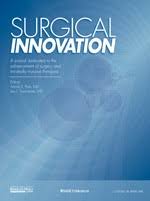Cost comparison analysis indicates significantly lower healthcare utilization by TIF procedure patients
REMOND, Wash. – EndoGastric® Solutions today announced that Surgical Innovation: Advances in Minimally Invasive Surgical Science, Technology, and Training has published five year follow-up data focused on control of GERD symptoms and healthcare economics after a Transoral Incisionless Fundoplication (TIF®) 2.0 procedure in a study called TEMPO (TIF® EsophyX vs Medical PPI Open Label).
 At five years post-procedure, these results are the longest available follow-up data from randomized controlled trials of the TIF 2.0 procedure. All primary endpoints of the TEMPO study were met, with 86 percent of patients reporting the elimination of regurgitation and 80 percent of patients reporting elimination of all atypical symptoms. Further, the data released indicates that treatment with the TIF 2.0 procedure improved health-related quality of life scores (p<0.001) and patient satisfaction (two versus 70 percent) for patients with gastroesophageal reflux disease.
At five years post-procedure, these results are the longest available follow-up data from randomized controlled trials of the TIF 2.0 procedure. All primary endpoints of the TEMPO study were met, with 86 percent of patients reporting the elimination of regurgitation and 80 percent of patients reporting elimination of all atypical symptoms. Further, the data released indicates that treatment with the TIF 2.0 procedure improved health-related quality of life scores (p<0.001) and patient satisfaction (two versus 70 percent) for patients with gastroesophageal reflux disease.
“This report offers conclusive evidence that the early benefits and safety reported with the TIF 2.0 procedure in previous shorter-term prospective multi-center randomized reports and prospective multi-center observational studies are sustained at 5 years follow-up—a milestone that has never been achieved by previous endoluminal GERD therapies,” said Karim Trad, MD, Clinical Professor of Surgery at George Washington University School of Medicine and Health Sciences and principal investigator. “The elimination of troublesome symptoms was maintained without significant deterioration over time, with a low re-operation rate of 5% after 5 years. Going forward, the endoscopic TIF 2.0 procedure should be considered as a first-line therapy in carefully selected patients resistant or intolerant to PPIs.”
In the TEMPO study, sixty-three patients who suffered from chronic GERD symptoms were randomly assigned to either undergo TIF 2.0 procedure (n=40) using the EsophyX device or to receive proton pump inhibitor (PPI) therapy (n=23). Six months after the start of the study, all patients receiving PPI treatment (n=21) elected to crossover and receive the TIF 2.0 procedure. At five-year follow-up, data from 44 patients were available for analysis.
This report also included an economic analysis using the Optum healthcare database to determine overall healthcare utilization, which incorporated costs for hospitalizations, outpatient visits and PPI therapy. At two years post-TIF procedure, healthcare utilization and total healthcare costs were significantly less when compared to those associated with laparoscopic Nissen fundoplication ($66,000 for TIF procedures verses $124,000 for laparoscopic Nissen fundoplication patients).
“EndoGastric Solutions has consistently invested in the highest-grade research to validate the long-term effectiveness and healthcare economics of the TIF 2.0 procedure,” said Skip Baldino, President and CEO of EndoGastric Solutions. “We are very encouraged that these investments continue to confirm that the TIF 2.0 procedure is a safe, efficacious, and viable endoscopic alternative to PPIs and more invasive anti-reflux surgery options.”
Detailed results, durability and economic data from the TEMPO trial were published online February 6, 2018, by Surgical Innovation: Advances in Minimally Invasive Surgical Science, Technology, and Training affiliated with the Institute for Research into Cancer of the Digestive System and can be viewed here.
